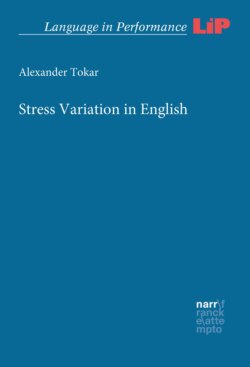Читать книгу Stress Variation in English - Alexander Tokar - Страница 9
На сайте Литреса книга снята с продажи.
1.3 Structure of the book
ОглавлениеThe present monograph thus aims to give a systematic account of the phenomenon of within-varietal stress assignment instability in Present-day English using both dictionary and corpus data (i.e., YouTube videos in which English words with stress doublets are actually pronounced by contemporary English speakers.)
The monograph is organized in the following way. Chapter 2 first discusses the phonetic properties of stress (i.e., differences between syllables bearing stress and syllables lacking it) and then summarizes the inventory of the stress assignment principles in the languages of the world (e.g., differences between fixed-stress languages and variable-stress languages). Chapter 3 elaborates upon methodological issues, such as, for example, the advantages and disadvantages of using YouTube as a corpus of spoken English. Using predominantly dictionary data (LDOCE, OD, etc.), Chapter 4 will discuss the stress patterns of all English words, whereas the first section of Chapter 5 will be exclusively concerned with English words with stress doublets (i.e., the question of why some English words have more than one stress pattern). Finally, using YouTube data, the second section of Chapter 5 will clarify why, in the case of words with stress doublets, one stress pattern is as a rule more frequently used by contemporary English speakers than an alternative stress pattern, e.g., why Euclidean is considerably more frequently pronounced /juːˈklɪdɪən/ than /juːklɪˈdiːən/, with both these pronunciations counting, according to the OED, as the legitimate pronunciations of Euclidean.
